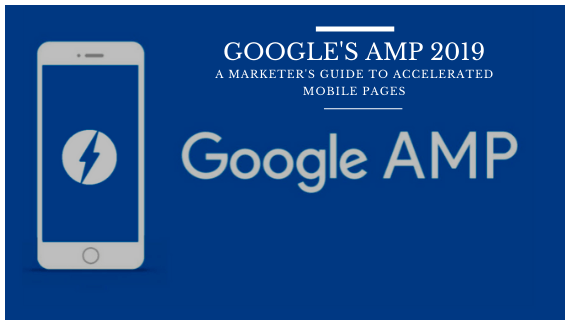What are Accelerated Mobile Pages (AMP)?
Accelerated Mobile Pages (AMP) is an open-source initiative aimed at creating faster, more efficient mobile web experiences. AMP pages are designed to load quickly and seamlessly on mobile devices, delivering a smoother browsing experience for users. By stripping down unnecessary elements and prioritizing content loading speed, AMP ensures that web pages load almost instantly, improving user engagement and reducing bounce rates.
Benefits of Accelerated Mobile Pages (AMP):
- Improved Page Load Speed: AMP pages load significantly faster than traditional web pages, leading to better user experiences and higher engagement rates.
- Enhanced Mobile Usability: AMP pages are optimized for mobile devices, ensuring a seamless browsing experience across different screen sizes and resolutions.
- Higher Search Rankings: Google prioritizes mobile-friendly and fast-loading websites in its search results. Implementing AMP can help improve your website’s visibility and ranking in mobile search results.
- Reduced Bounce Rates: Faster page load times and improved usability contribute to lower bounce rates, keeping users engaged and on your website longer.
- Increased Revenue and Conversions: Studies have shown that faster-loading pages lead to higher conversion rates and increased revenue for businesses.
How to Implement Accelerated Mobile Pages (AMP):
- Choose AMP Framework: Decide whether to implement AMP using pre-built templates, AMP plugins for popular content management systems (CMS) like WordPress, or custom development.
- Optimize Content: Simplify your web pages by focusing on essential content and removing unnecessary elements like large images, JavaScript, and third-party scripts.
- Apply AMP HTML: Convert your web pages to AMP HTML format, ensuring compliance with AMP specifications and guidelines.
- Validate and Test: Use Google’s AMP testing tools to validate your AMP pages and identify any errors or issues that need to be addressed.
- Integrate Analytics: Implement AMP-compatible analytics tools to track user engagement, traffic, and conversions on your AMP pages.
Best Practices for Accelerated Mobile Pages (AMP):
- Prioritize Critical Content: Focus on delivering essential content and functionality first, ensuring that users can access the most relevant information quickly.
- Optimize Images and Media: Compress images and optimize media files to reduce file sizes and improve page load times.
- Minimize CSS and JavaScript: Keep CSS and JavaScript code to a minimum, eliminating unnecessary elements and optimizing code for faster rendering.
- Implement Lazy Loading: Use lazy loading techniques to defer the loading of non-critical content and improve page load speed.
- Ensure AMP Compatibility: Regularly test and validate your AMP pages to ensure compliance with AMP specifications and guidelines.
What could be more embarrassing than showcasing your website as a provider of best local SEO services, and itself not working at an excellent speed? Well, if you will not pay heed to this grievance, then no one else will.
No doubt about the fact, that there is always something valuable designed for poor situations. In this case, it would be AMP for boosting the speed of web pages.
AMP
Accelerated Mobile Pages is a component for web and an open-source project established by Google, eventually displaying the first format for web-based content. Designed mainly for making the web mobile quicker, there is a major requirement for setting up the structure of the page as per the AMP HTML, JS and Cache.
With the recent trending updates where the Google AMP project is standing tall can give a great view for understanding, whether the same is good enough for adapting to our website or not. As we know that one of Google’s first index for mobile has been showcased and all the users have even received the notifications from the Google authorities itself, about half of the websites being majorly enrolled in the index. This mobile-first index has been taking power over Google’s desktop index which is more like a traditional one and can serve the best of results on whichever mobile device the search is taking place.
The same thing makes way for web developers to execute a fully responsive design that is customized for the users on any kind of device. In the whole processing, Google has tried to make the activity simpler for the device masters with the creation of an open-source initiative that can level up the cut-out HTML files for the establishment of quicker and mobile-friendly copies of the web pages. Well, this is the one which is mainly implied as Accelerated Mobile Pages (AMP) that are displayed by a unique symbol on the search results of the device, a lightning bolt.
Considerably, it would be better to pick out some factors before the adoption of AMP for any website:
- Be aware of the fact that one of the ranking features for mobile and desktop indexes of Google is the speed of the web page.
- Even if there is a one-second delay in the process, there can be a great downfall in the speed of the web page, which can be measured as seven percent.
- AMP is regarded by some as the greatest ranking feature in the mobile-first index.
Still, several users are doubtful for the adaption of AMP in the websites. Also, AMP is still under construction as it is not completely made and is constantly addressing the concerns from the users who are getting trouble getting AMP for the websites.
Current Position
The AMP pinned pages were established in the beginning, so that there could be competition between the Facebook Instant Articles. In addition, there were thoughts about the usage of the same for news results on mobile devices. In the present era, the results displayed by AMP are spread across all over the organic search results, and still as a user, one might not be able to notice it likely.
Apparently, AMP pages are not specifically limited to the news carousel results. In accordance with the recent results and updates, looking keenly at the AMP Project, the pages of AMP are around three years old and the development has drastically turned down in some places.
Taking an insight into the timeline of the crucial news of AMP, since some of the last years:
24th February 2016 – Google launched the project AMP – Accelerated Mobile Pages
20th September 2016 – AMP was involved in the search results of Google
21st August 2017- The advertisement for AMP completes the second phase of the development process.
13th February 2018- The stories of AMP are initiated
7th December – Word press plug-in goes on the floor officially.
The growth of AMP for the landing pages and advertisements has not been completed, though the fast fetch providing service has made the advertisements give at a better speed than the traditional advertisement on Google, and implementation of gtag.js has connected AMP ads to the events of analysis and Google ads.
However, for a great while, AMP has turned extremely famous all around the world. The results of AMP have now been published in Sogou, Baigu, and Yahoo Japan. A lot of publishers around the world, involving the Times of India, Slate have now adapted AMP for the improvisation of the organic search results. All these publishers have undertaken this formula for all the news and blog based content, and the range of domains that used AMP has reached up to 31 million from last year.
Accelerated Mobile Pages
Accelerated Mobile Pages which is shortly referred to as AMP, are importantly cut down HTML copies of the already existing content of web page rendering quicker load time in comparison to the standard HTML5 documents. Websites can bestow AMP pages by the execution of a rel=amphtml tag in HTML. Pages that own AMP includes the code which further contains a three kind AMP configuration.
- HTML: A without enhancements and distinctive markup of the traditional HTML code with some unique tags.
- JS- It is used for picking up resources and reducing down to cancel out the unimportant rendering services.
- CDN- It is an optimized network that is made up of cache pages and for the adaption of AMP code quickly. Also, AMP can decrease the requirement for extra CSS requests and cancels out the specific on-page elimination, which further involves huge pictures, CTAs in a lot of cases, and lot more in the back end code. This thing brings out a great effect for leveling up the speed in an effective manner.
In the beginning, AMP increases the loading time of the web page by a secondary level of the complete speed, done by enabling the AMP caching. Necessarily, Google takes this functioning procedure by preloading AMP documents with the usage of one iFrame in the background process of the search results page so that the pages can be displayed instantly.
The documents of AMP are also brought out from the AMP library directly from the original server of the same. The Library of AMP has documents like AMP JS and AMP HTML. However, picking the documents does not guarantee to bring a boost to the speed.
AMP Stories
As per the old critics, a lot of complaints were gathered for AMP, as it turned to a more repetitive and flat pages because there was an omission of many elements like Javascript, that allow the developers for the creation of better interaction, texture, movement and best experience. Well, this is one of the reasons because of which the AMP stories can be the most essential intro for AMP in this year. This process is basically Google’s way of taking over the “story” activity which has taken over the minds of people already through applications like Instagram, Facebook, WhatsApp, and Snapchat. As per the rest, it renders permission for posting brief videos, photos, good clips and a lot more. So, this is the reason that Google has jumped on to the system of stories for better exposure, lifetime experiences, vibrant services and much more. With the help of AMP pages, the stories of AMP can get better access to Google searches as well. Yet another basis about why AMP should now be on the top priority.
Is there a need to adopt AMP?
Since AMP caching has been offering improvised speeds and is mostly favored by the Google search results, which eventually means that using AMP for the website can come with some warnings.
For the beginners out there, AMP starts its working if the users click on the AMP version of the web page, against the canonical version. As per the studies and observations, the AMP library has reduced the number of server requests for picking up the document by a percentage of 77, but the AMP services cannot be rendered if the implementation process is not undertaken correctly.
Keeping a track of the data from AMP pages from the analytics, ads or double click is extremely limited, yet the analytics is in the growth process.
Essentially, putting AMP into effect refers to compromising a lot many UX elements of the web pages. AMP HTML keeps the priority of efficiency, on creativity. But, during all this time you are missing on giving out images on the website, as AMP pages do not allow more than one advertisement tag per page. Also, implementation of the code is difficult even before the WordPress plugin.
In spite of, all the vehemence initiated by the AMP project during the launch, the development of the same has been slow and the users are not closed for recognization of AMP serving content on the mobile device.
How AMP Operates?
1) AMP does not allow the extension functioning to block page supply; instead, it gives support for extensions like Instagram, tweets, lightboxes and so much more.
2) It only permits a non-synchronous Java Script.
3) AMP has been established for understanding the process of web page designing, for example, the resources and structure, as it simply helps in segregating ads, visuals, and content.
4) It makes sure to keep all the third parties of Java Script as well as any other thing that can hamper the loading activity in any way.
5) Besides, AMP focuses on working on the websites kitty which bestows better brief about priorities, hence, leading to higher speed and results.
Personalization of AMP pages
AMP codes can be customized and tracked by the usage of Google Search Console or the HTML users can optimize them. A web manager can undertake the update of the AMP cache by the usage of an “update-cache” request. Some of the examples for the personalization of the AMP HTML document are as below:
- amp-pixel: tracking pixel
- amp-access: paywall access
- amp-pixel: tracking pixel
- amp-dynamic-CSS-classes: dynamic CSS elements
- amp-live-list: update content in real-time
- amp-iframe: display an iframe
- amp-analytics: analytics tracking
- amp-app-banner: fixed banner
- amp-animation: add animations
- amp-list: download data and create a list
- amp-access-later pay: integrates with LaterPay
- gtag.js tag implementation allows for events tracking across Google Ads and Search Console
A Quick Look at Merits
- Boost the speed of loading website timings on mobile devices, as that acts as a bonus.
- The level of revenue will ultimately rise with the increasing number of website visits.
- Attaining preferences is never easy; however, AMP can help you have that as well, especially for websites not owning AMP usage.
- Reduction in loading time and bounce rates.
- A higher level of customer satisfaction on visiting the website.
- Increased rankings by mobile viewing system.
Can AMP be the future?
In between the doubter of Google and Google’s humdrum campaign for AMP, most of the users and web managers were not really aware of AMP for some time and also were not ready to accept it. But, now with time, there has been an increasing rate in the adoption procedure of hurrying up.
As looking at it on a deeper level, one can sense how around thirty-one million domains adopted the AMP at the beginning of last year. Hence, summing it up, two years prior, it was less than a million.
Since digitization is leading the area of time, from a very long time and ultimately making SEO, search engine optimization to move out constantly from the computer towers to the screens of mobile and the various other devices. This way the ratio of adoption for AMP and the various other resembling technologies will give a boost. Now, it is time for the already available platforms to make a move towards an easy transition for the audience.
Now is the best time to involve AMP to your website and turn as the best local SEO services supplier!




